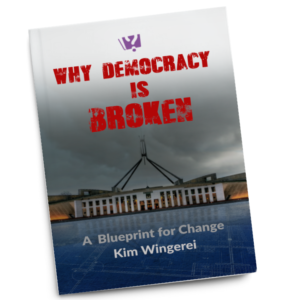NBN Co’s latest 2020 Corporate Plan was announced last week with the headline being a substantial $4.5 billion investment in deeper fibre for both enterprise and residential customers. This has been welcomed by many and seen as a vindication of the original NBN plan to deliver fibre to 93% of Australian households. However it also signals that the Coalition Government is preparing to double down on its strategy to cement NBN Co as the monopoly provider of fixed broadband in Australia.

Both Malcolm Turnbull and Paul Fletcher were vocal critics of Labor’s plans to create NBN Co and in particular the deals it struck with Telstra and Optus to shut down the pay TV Hybrid Fibre Coax (HFC) networks and effectively both nationalise and monopolise the Australian fixed broadband industry. On coming to power in 2013 and 2014 the Coalition commissioned a number of reviews into NBN Co and the telecommunications industry with the outcome being the Multi-Technology Mix (MTM) model that has completed its rollout this year. An important recommendation from the Vertigan Inquiry was for NBN Co to be dis-aggregated or broken up to encourage infrastructure competition and effectively reverse the monopoly policy of the Labor Government.
In responding to this recommendation from the Vertigan Inquiry in October 2014, Malcolm Turnbull, as Minister of Communications said :
While disaggregation of NBN Co’s business units (as the panel recommends) after the network is complete cannot be ruled out, now is not the time. Breaking up NBN Co would distract its management and delay the provision of high-speed broadband to all Australians.
Now in 2020, with rollout of the network MTM practically complete, the opportunity for the Coalition to revisit the Vertigan Inquiry recommendation appears to have come and gone. The planned investment in more fibre to enable 68% of Australians to get 500+Mbps download speeds is not only a reversion to the Labor Government’s “fibre is best” strategy, it is also a recommitment to the NBN as a fixed network monopoly plan that Labor initiated.
This highlights the complete transformation of the Coalition away from a party that champions free-enterprise and market based technology developments to a party that believes in government intervention in the high stakes game of technology investments. The Coalition has consistently rejected market based solutions to guide the transformation of the energy market and has now clearly committed to re-inforcing NBN Co’s domination of Australia’s fixed broadband market.
Given the significant change in strategy and the large investment required, it is now likely that any privatisation of NBN Co will be delayed until the market sees whether this new strategy is successful or not. A privatisation during a large capital expansion phase is highly problematic. Private investors will be reluctant to be locked in to an unproven strategy and will want to wait to see how the business case plays out in practice.
Business Case for Fibre Investment
NBN Co’s new plans for fibre investment in the enterprise and residential markets are aimed at using its extensive network coverage and scale advantages to capture as much of the fixed broadband market as possible.
Competition between the private sector players (Telstra, Optus, TPG Telecom and Vocus) in the enterprise fibre market has been effectively delivering new fibre connections to large Australian business for two decades. NBN Co entered this market as a disruptor in 2018 and, despite a mini-truce on the method of engaging with end businesses in early 2020, is now expanding its enterprise footprint further with an extra $700 million investment. These aggressive initiatives by NBN Co are effectively stranding existing private fibre assets and destroying any incentive for further investment by the private players. This will no doubt be a successful line of business for NBN Co where it has a huge advantage given its scale and near-zero cost of capital.
Success in the enterprise market will be important because it will need these lucrative cashflows to balance its problems in the residential market.
In the residential sector, NBN Co will be spending $3.5 billion on upgrades to the HFC, Fibre to the Curb (FTTC) and Fibre to the Node (FTTN) networks. As would have been expected the largest spend is on the upgrade to FTTN with $2.9 billion required to enable Fibre to the Premises (FTTP) for 2 million households (out of a total footprint of 4.7 million) on the FTTN network. A quick analysis of the economics of this investment shows that this spend is not motivated by higher returns.
The current NBN Co wholesale pricing 1 bundles for speeds of 50Mbps and above for residential services is presented below. From this, using an assumed take-up mix of different speed, the approximate ARPU increase in the FTTN footprint is $3.76 per month.

This assumed increase in ARPU across the 2 million households in the upgraded FTTN upgraded will provide an additional $90.2 million per year to NBN Co. Assuming that there is no additional operational costs this equates to a return of 3.1% on the $2.9 billion investment. This investment return is under the overall returns assumed in the 2019 Corporate Plan (3.2%) and also the new forecast overall return in the 2020 Corporate Plan (3.7%).
So it seems that the investment in the FTTN upgrades will actually detract from NBN Co’s overall returns. This exposes the main motivation of NBN Co in making this investment – to defend against competition from Telstra, Optus and TPG Telecom using 5G Fixed Wireless Broadband (FWB).
The clear intentions of Telstra, Optus and TPG Telecom to compete in the fixed broadband market with FWB are recognised by NBN Co as threats in the new Corporate Plan for the first time. 2 However, despite this NBN Co has not changed its overall forecasts for take-up which remains at 73-75% of all households. 3
So in summary NBN Co is investing extra capital in the FTTN network in a way that reduces the overall return on its investment just to retain its overall market share. This highlights the defensive, loss-leading nature of its investment in more fibre in the FTTN footprint.
However, to be successful with its plan NBN Co must now complete its somersault by promoting these higher speed plans to its customers. Download speeds in excess of 100Mbps and the corresponding large data volumes are a weak point in the FWB technologies. NBN Co must convince customers to pay significantly more (up to $150 per month retail) in order to differentiate themselves from FWB. This is in direct contrast to the detailed research commissioned by the Coalition Government that Australian households will be well-serviced by 50Mbps speeds until 2026.
Much will hang on positioning the change to be the result of a new COVID paradigm where ‘Working from Home” necessitates such high quality services. But it is unlikely consumers will be willing to pay for these services out of their own pockets – the campaign will need to focus on employers subsidising or paying for high quality home broadband. Are we going to see a transfer of employer costs from office rents to home broadband services?
But why will Telstra, Optus and TPG Telecom, who purchase over 90% of NBN Co’s services for resale to end customers, co-operate with NBN Co in this paradigm shift. The larger RSPs have been the subject of a margin squeeze for a number of years and clearly want to exert pressure on NBN Co to reduce its wholesale price points across all speed tiers to recover some of their profitability. These same RSPs can put pressure on NBN Co by offering lower priced FWB services to compete with the majority of NBN Co’s current services at the 50Mbps and below speed tiers.
The real battle for broadband market share is likely to be happening at the lower end of the market where FWB has its advantages. While NBN Co attempts to pivot to the upmarket business and high end residential / home office worker markets, the FWB players will be bringing their powerful marketing and sales channels, that have been honed for years on mobile competition, to a new battlefront where NBN Co is not able to participate because of its wholesale nature.
Much rides on the outcome of this battle between NBN Co and its biggest wholesale customers. Another opportunity to have the private sector drive investment in complex technology battles has been missed. Meanwhile, as the state-owned NBN Co invests in more fibre in urban areas in a battle with the private sector, regional and rural communities are likely to be waiting for upgrades to NBN Co’s own Fixed Wireless and Satellite networks.
Taxpayers will be taken along for the ride, as the Coalition extends and expands its policies of picking winners in complex technology markets (such as energy and telecommunications) which are essentially competitive. Those Australian taxpayers living in regional and rural areas, that the private sector finds fundamentally unattractive to service, will be looking from a distance and again wondering why the big cities are again getting all the government attention while they get left behind in the digital economy.
Notes:
The post Coalition doubles down on the NBN monopoly – but can it defend itself in the upcoming battle with 5G? appeared first on Gary McLaren.


